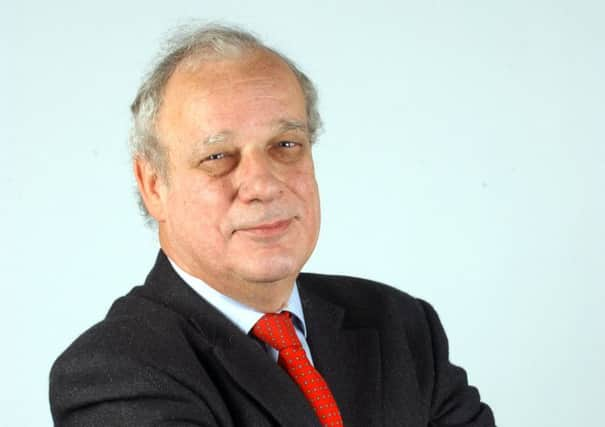Comment: Is change what Alliance Trust needs?


Speculation has been growing since the trust promised to announce changes to the Dundee-based trust this autumn. The commitment came after the board capitulated in the face of a shareholder rebellion earlier this year with the co-option of two “rebel” directors and in the wake of a “particularly challenging” six-month period for the trust.
Alliance has struggled to lift performance and its popularity with private investors and IFAs. The discount to net assets remains above the industry average at 12.3 per cent.
Advertisement
Hide AdAdvertisement
Hide AdThe trust has already undertaken substantial reforms. Boardroom composition has been changed. Anthony Brooke and Rory Macnamara, nominees of Elliott Partners, have joined as non-execs and the company is close to appointing a new non-executive to strengthen the oversight of the chief executive and her team.
The trust’s investment management was overhauled last year with the promotions of Peter Michaelis and Simon Clements. New guiding principles have been set down and the number of equity shareholdings cut from 88 to 68. There is a commitment to quarterly dividend payments. Steps have been taken to bear down on persistent losses at the Alliance Trust Savings platform.
After seven years at the helm as chief investment officer, Garrett-Cox may well feel that she has done all that she reasonably can to meet investor concerns. She has maintained the trust’s record of 48 years of unbroken dividend growth. Indeed it is hard to see what more can be done by way of significant change to the trust’s management and governance that could make an impact and convey the sense of fresh start. And another change in investment management at this stage, so soon after the last, would open the trust to charges of inconsistency and inability to take a long-term view.
While there is no evident pressure on the chief executive to step down, this autumn may present an opportunity to set in motion succession plans for this demanding post and put the £2.7 billion trust on a more forward-looking course. The alternative may be to prepare a tender offer.
Alliance Trust returned just 1.4 per cent over the six months to end-June, putting it in 29th place out of 36 peers. It says a slump in stocks and the spike in bond yields at the end of the period made its equity-heavy strategy appear comparatively weak.
Garrett-Cox said: “While the results for this specific period were disappointing, it should be noted that since the equity team took over responsibility for the portfolio in September 2014, the equity portfolio has outperformed its MSCI All Country World Index benchmark.”
Most analysts are expecting modest steps to improve the trust’s rating and reduce the discount. Tougher and clearer performance targets may also be on the agenda. But more change may be on the way.
Gold loses some shine
Down went gold again last week, falling below $1,100 to its lowest since March 2010. It has been hit by the sell-off in commodities, concerns over China and unnerved in particular by talk from US and UK central banks of a rise in interest rates on the horizon.
Advertisement
Hide AdAdvertisement
Hide AdGold has been steadily falling since a peak of $1,900 an ounce in September 2011. Late last month the spot price slumped by more than four per cent to $1,086 an ounce after traders sold 57 tonnes of gold in Shanghai and New York. This triggered stop-loss orders, causing the price to drop even more sharply.
Gold has enjoyed strong support in recent years as near-zero interest rates have diminished the attractions of alternative assets such as bonds and equities. But the base case for gold does not primarily rest on price performance vis-à-vis other assets. It is not income producing and its price can be volatile. But its role is as an insurance policy in the event of a sharp fall in the price of paper assets. As such it is a favoured long-term holding among defensive investors.
Edinburgh-based Personal Assets Trust (PAT) has long been considered a “gold play”. But in fact, gold currently accounts for 11 per cent of its portfolio, compared with 39 per cent in equities and 50 per cent in UK gilts and US Treasury bills. PAT shares are still up 3.3 per cent over the past 12 months though it has lagged global trusts over a three year view.
That said, the case for a defensive posture is undimmed, as the board made clear at its recent annual meeting. Just in case you thought the prospect of a return to rising interest rates marked progress on de-leveraging, the presentation featured a slide showing global debt still climbing and hitting $199 trillion (£127tn), with government debt at a record $58 trillion, up from $33 trillion in 2007. Meanwhile, ongoing geopolitics across China, the Middle East and Europe is giving investors plenty to be concerned about.